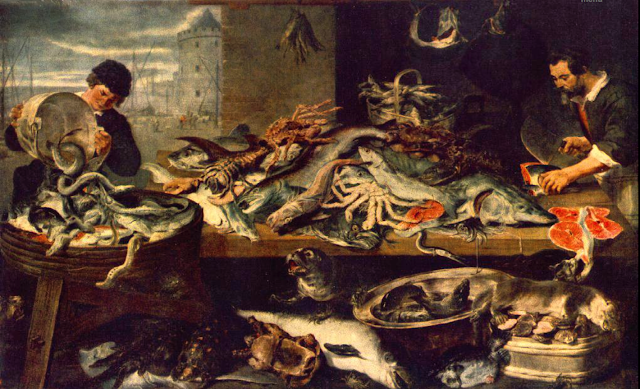The bride and I had a wonderful vacation in France this fall where we were privileged to see both the Louvre and Orsay Museums. Of the two, the Orsay was much better--less crowded, could get closer to the paintings, more cats.
This is second of at least 3 posts on the cat art of Jean-Baptiste Oudry.
Image credit National Gallery of Canada, Two Cats, Jean-Baptiste Oudry, 1725, oil on canvas, 29" x 36", held by the National Museum of Canada, Ottawa, Canada.
And of course the kitty head shot:
From the museum web site:
Oudry has emphasized the large, gleaming eyes of the cats standing over a dead partridge. Both the defiant pose of the cats and the artist's attention to subtle differences in their markings suggest that this is a portrait. The work is contemporaneous with his portrait of "Le Général", Louis XV's cat. Oudry devoted his career to painting animals and was the official artist of the royal hunt.
I don't think I've ever seen a cat as mad as the one on the right. Or maybe the cat is just intent upon the dead partridge, as painted, but the kitty just seems pissed beyond belief.
Thus far I've done a little investigation but nothing seems to be turning up about the tantalizing tidbit in the museum comment concerning Oudry's painting of the cat of Louis XIV. Stay tuned!
[Gary note: With my Cats in Arts posts, I encourage you to scope out the art appreciation site Artsy (I have no financial interest in the site, I just like it), where you can explore many aspects of the world of art. You'll certainly be entertained and enlightened!]






